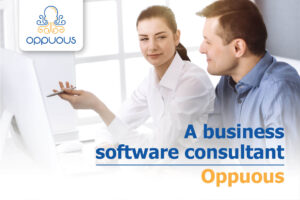It's easy to get lured in by all the glamorous features new technology has to offer, but how do you know which products and services are right for your company? Here are 5 steps that’ll help you uncover which emerging tech is best suited for your business.
Emergent technology can be technology that is new to the whole world, or it can be technology that is only new to your company. Both types provide their respective benefits and risks.
Here’s a breakdown:
| Technology New To Everyone | Technology New To You |
| Disruptive tech can uncover new potential for growth. | There are no surprises when investing in old tech. |
| You are in a position to become an expert in the new tech and lead the way in its use and development. | You can take advantage of the experts who were around when the old tech was new. |
| If you adopt the new tech first, your company will have a significant competitive edge. | There will be significantly less bugs present in old technology. |
| New technology is expensive. | Old tech may be on its way out or already obsolete. |
| There may be glitches and bugs in new technology that still needs to be resolved. | Old tech limits creativity and places you in a box. |
Examples of emerging technologies:

- Machine learning software
- Artificial intelligence software
- Cloud computing
- Augmented reality software
- Virtual reality software
- Mixed reality
- Intelligent automation
- Blockchain technology
- Robotics
Using the scientific method to evaluate new technology
- Step 1: Ask A Question
Don’t be hypnotized by all of the fancy new features, you need to ask yourself what processes you would like the new technology to help make more efficient. If you just flock to the first product or service that catches your eye, you’re really just guessing and wasting your time.Try to be as specific as possible when asking yourself what role you wish the new technology to play in your business.
Guiding Question Process Example:
Let’s say you want to give your marketing team a digital makeover. You already have a solid marketing strategy that includes customer relationship management software, email marketing software, and social media marketing software, but you’ve heard of some new virtual and augmented reality technology that can enhance a customer’s buying experience and lead to more sales.In this scenario, your guiding question would be:
“Will giving customers access to VR and AR experiences drive sales?”
This is a specific question that provides a need and possible solution.
- Step 2: Do Your Research
Use your guiding question to guide your background research so you don’t waste time on technology that isn’t right for your company. This will help you form an educated hypothesis later down the line.Research Process Example:
Keeping with the theme of the virtual reality example, let’s say you now know you want to find out if utilizing VR and AR in your marketing strategy will drive sales. Before you start your experiment, you’ll need to answer some questions upfront.Some questions you’ll want to answer upfront may be:
Is it possible to use VR/AR in marketing strategies?
How have businesses used VR/AR in marketing campaigns? Where did these campaigns exist (e.g., social media, on their website, email)?
Are there any published success stories? Are there any success stories specific to my industry/business size?
How did they measure success?
What challenges did they face?
What are some popular platforms? What do users say about them? - Step 3: Write Your Hypothesis
So, you’ve thoroughly researched your question and now are ready to make a well-informed hypothesis.Your hypothesis can follow a formula such as: “If _____[I do this] _____, then _____[this]_____ will happen.”
It is best to only form one solid hypothesis based on the formula above, so you can narrow down your options and choose the best product or service for your company.
Hypothesis Creation Process Example
From your research, you have discovered that virtual and augmented reality services have driven sales for other companies. From this, you can deduce that virtual and augmented reality services will have the same effect on your sales, right?Well, kind of. You need to dig a little deeper than that. For example, you can discuss the specific software platform you’ll use in the experiment with your team to ensure more accurate results at the end of your experiment.
Start thinking about questions your team must answer in order to achieve the best results possible.
Here are some examples:
Have we selected the VR/AR platform we will use?
Have we taken advantage of demos and free trials?
Do we need to hire someone with technical expertise to handle the platform?
What’s a realistic timeline for the different pieces?
Have we done our research on what kind of campaign our audience would favor?
What will the campaign consist of?
What metrics will we track, and how will we know it succeeded or failed?
If it fails, what will we do?
What are potential setbacks or challenges we might face?
How can we mitigate potential risks?From these questions, you and your team should be able to come up with a solid list of steps you will take to execute your experiment.
- Step 4: Test it
Now for the fun part! This is where you wanted to start your experiment before you knew the first 3 steps. Follow the steps you and your team created to ensure you get the best results and feel confident when evaluating the new technology.Testing Example
Before you test your hypothesis about using AR and VR, a lot of preparation needs to be done. You need to select the VR/AR software you’ll use, create the campaign strategy, define the target audience, know what you want VR/AR to do and look like, know how you’ll track success metrics, and create the VR/AR experience.Now that all the preparation is complete, it’s time to execute the experiment! Make sure to give your experiment ample time to run, as this will ensure the most accurate results.
- Step 5: Draw a conclusion
Once you’ve let your experiment run for the appropriate amount of time, it’s time to analyze the results and draw a conclusion. Ask yourself: Does the data support my hypothesis? Does it leave room for questions?”Conclusion Example:
Let’s look at two scenarios that may have occurred after you’ve ran your experiment:Scenario A: The results reveal that the VR/AR did drive more sales.
Scenario B: The results reveal that the VR/AR did not drive more sales.
Your next steps for each of these scenarios will look very different.
In scenario A you and your team should start analyzing the data to discover what aspects of the experiment led to the results. Remember, one success doesn’t necessarily guarantee future success. After you pick apart the process and results, you’ll be ready to decide if you want to keep the software you used or look for a different one.
Scenario B will be quite similar. Analyze the results and pinpoint areas that led to the final results. After, you can decide if you want to run the experiment again using a different campaign strategy or software.
For either scenario, you’ll want to honestly communicate your results to stakeholders.
Be Proactive About The Way Your Business Evaluates New Technologies!
Book some time with our technology experts to guide you in finding the best fit for your companies needs: https://letsmeet.io/oppuousllc/30-minute-consultation









